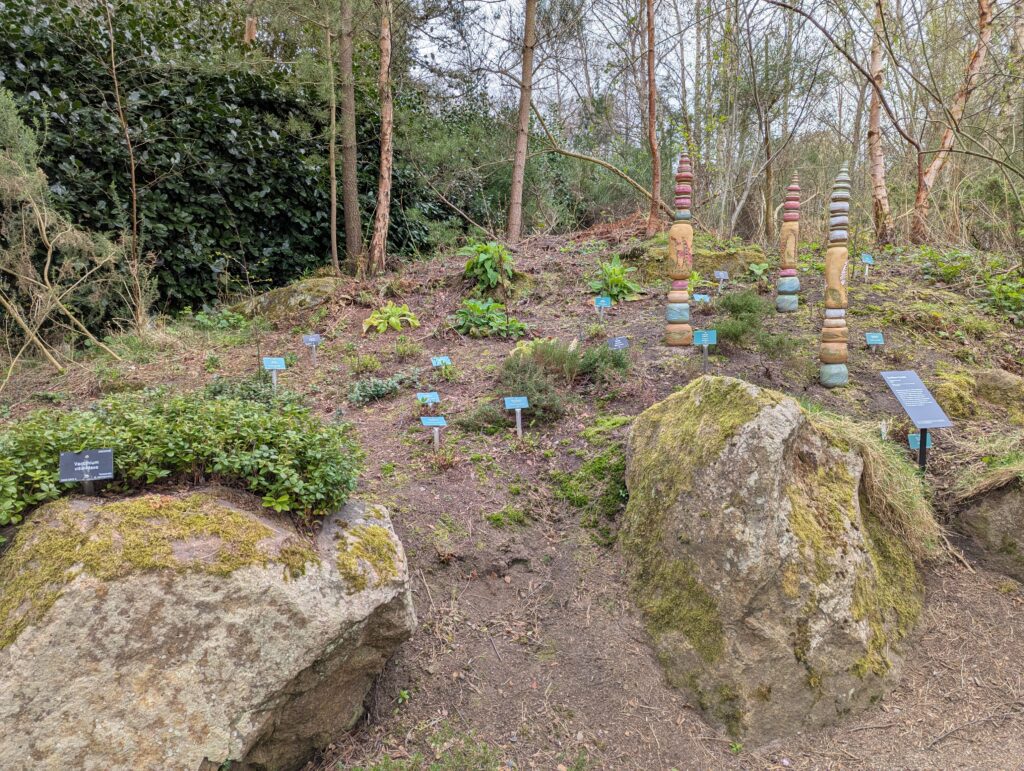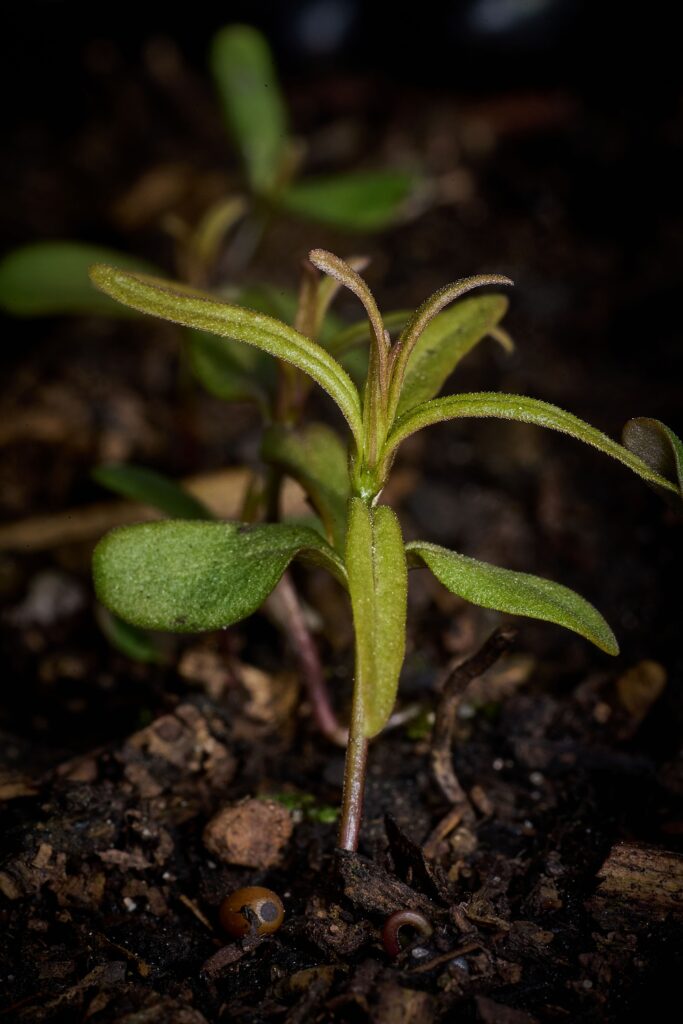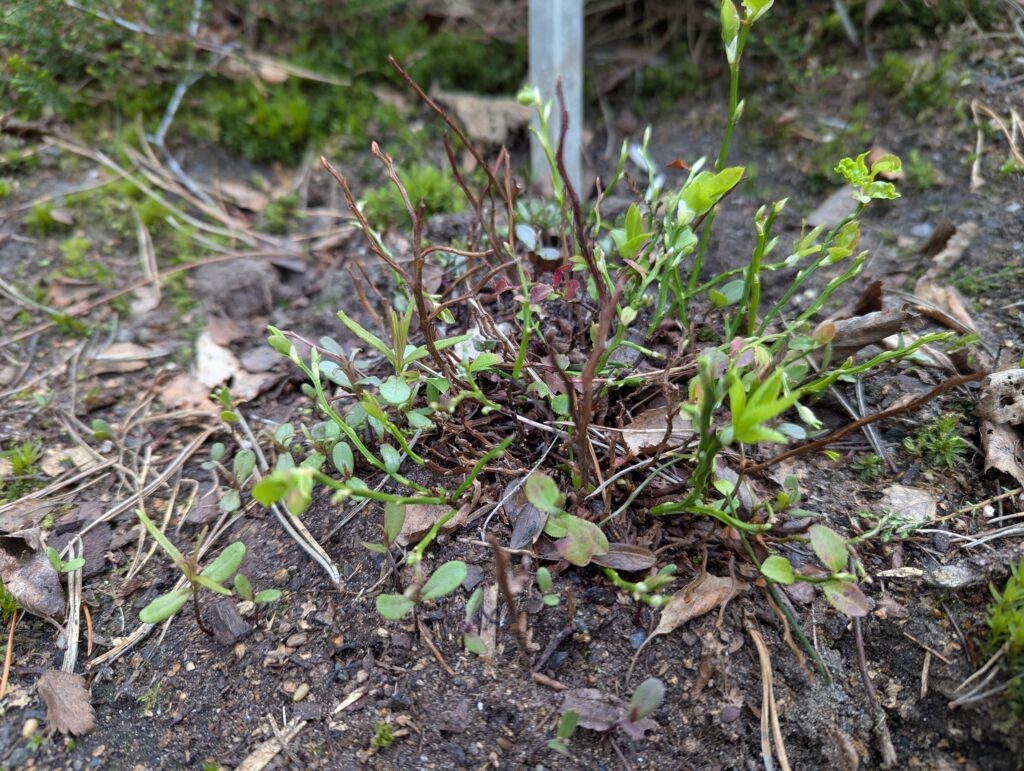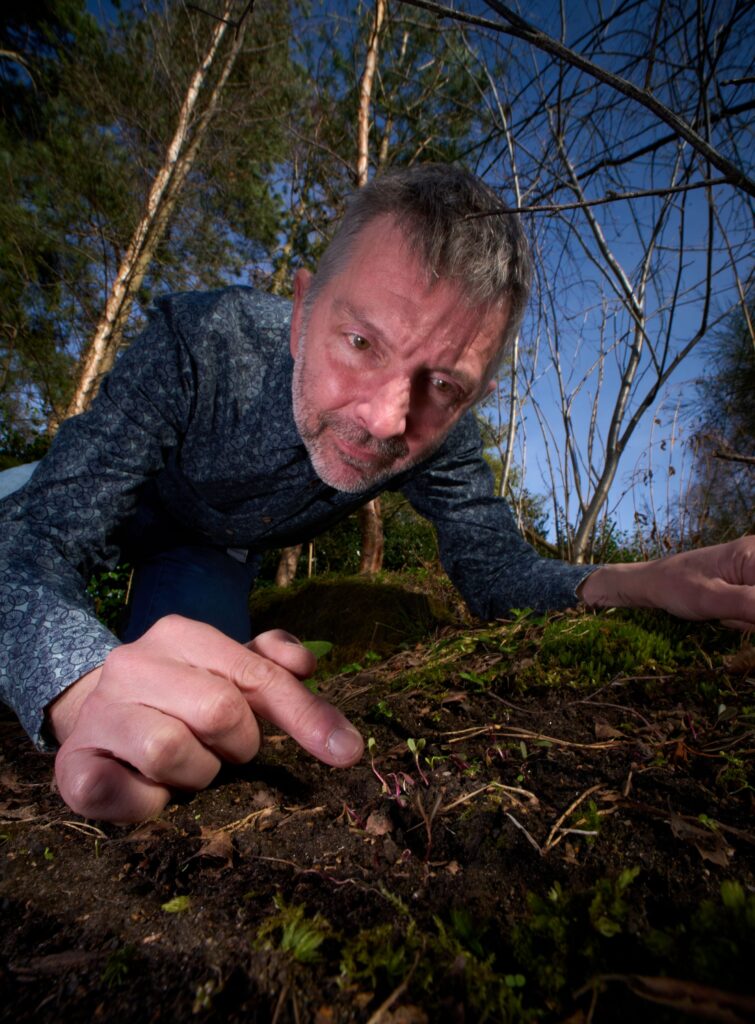The Garden is now being used as a test bed to explore some of the challenges and unanswered questions involved in returning threatened Scottish plants to wild sites. The focus of this activity is in the Wilding Garden near the East Gate. Those who have known the Garden for many years will be familiar with this area under its old name, the Scottish Heath Garden. At its heart is a ruined bothy – a Scottish name for a small hut – and a pond.

If you enter the Wilding Garden from the East Gate end there is a bank on your left above some large boulders. This area is being used to trial different approaches to establishing small cow-wheat (Melampyrum sylvaticum).

Fundamental questions remain unanswered about the biology of small cow-wheat. These have been explored in previous posts on pollination and seed dispersal. Small cow-wheat is also a parasitic plant that has many potential hosts. Which species are the most important hosts in Scotland is another unanswered question. In the wild this plant grows in vegetation that is relatively diverse. We know from experience it grows well using rowan (Sorbus aucuparia) as a host as this is the species we use in the nursery to maintain a large cultivated population of small cow-wheat as a back up against extinction.

We have been experimenting with different approaches to getting this rather demanding plant established on what we hope might become known as the ‘cow-wheat bank’. Blaeberry (Vaccinium myrtillus) grown in pots have been sown with cow-wheat seeds at a time the seeds would begin to germinate and these plants have then been planted out when we judge that the cow-wheat has formed a connection to the host plant. We have also sown seeds around established blaeberries growing on the bank. Finally, to cater for the possibility that blaeberry is not a good host plant, we have sown seeds around other potential hosts on the bank, including crab apple (Malus sylvestris), rowan, Scots pine (Pinus sylvestris) and silver birch (Betula pendula).

As I write this post the early results look encouraging as there is good germination of small cow-wheat across the bank around various potential hosts. Many blaeberry plants have groups of seedlings around them. The blaeberries are rather small plants and this may limit the growth of the cow-wheat. Last year we noticed that the cow-wheat plants around the blaeberries where much smaller than expected. This second season will be a further test of the suitability of blaeberry as a host. There is also good germination around crab apple and a few seedlings in places where it will be hard to judge which of several possible hosts might be being used. Scots pine has produced no seedlings, so far.

The opportunity to do this sort of experimentation in the Garden is invaluable in preparing for what will be multiple, large introductions of seed to wild sites. The trials have already demonstrated that direct sowing of seed is effective and this is extremely useful knowledge as it eliminates the need to use potted host plants. There is a dual benefit here as returning the cow-wheat to wild sites becomes a logistically simpler task and the risk of pests and diseases being inadvertently moved in compost is avoided.

- X @TheBotanics
- X @nature_scot
- X and Facebook @ScotGovNetZero
- Facebook @NatureScot
- #NatureRestorationFund
